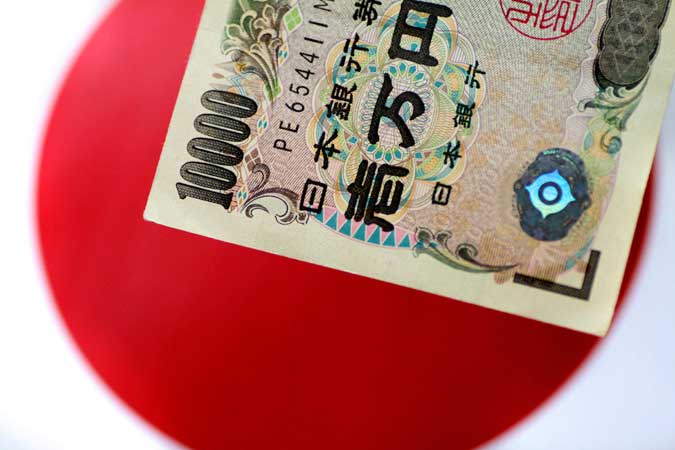A Japan yen note is seen in this illustration photo taken June 1, 2017. — REUTERS/THOMAS WHITE
THE Philippines has received ¥20 billion (P8.71 billion) as part of the third tranche of the Japan International Cooperation Agency’s (JICA) ¥50-billion standby loan, which will be used in the government’s post-pandemic recovery efforts.
In a statement, JICA, the lending arm of the Japanese government, said the latest issuance has brought overall disbursements from the post-disaster standby loan phase II to ¥40 billion so far, following the ¥10 billion released in January and the first issuance worth ¥10 billion in October 2020.
Signed in September 2020, the loan was seen as a contingency fund for the Philippines in case the government needs to raise money for its recovery efforts following natural disasters or public health emergencies.
JICA Chief Representative Eigo Azukizawa said the release of the third tranche should help the government fund its planned financial aid program for affected households and sectors.
“JICA will continue to support our partner countries like the Philippines in building back better from the COVID-19 crisis. The disbursement hopefully will support social amelioration program for vulnerable people and sectors, and thereby cushioning the economic impact of the pandemic in the Philippines particularly on job losses and support economic recovery efforts,” he said.
Disbursement of the standby loan can be triggered once certain conditions are met, such as a declaration of a state of calamity or of a state of public health emergency; public health emergencies such as the coronavirus disease 2019 (COVID-19) pandemic; and the imposition of an enhanced community quarantine.
JICA said one month of strict quarantine measures in Luzon could lead to economic losses equivalent to 1.5-5.3% of the country’s total economic output, and with up to one million jobs lost, based on a report by the National Economic and Development Authority (NEDA).
Aside from funding the pandemic response, the initial tranches of the loan also supported rescue, relief and rehabilitation efforts of cities and provinces hit by strong typhoons toward the end of 2020.
The standby loan facility can be tapped in batches within three years, while the loan’s validity can be extended by three more years for up to four times.
It has a fixed interest rate of 0.01% and has a maturity period of 40 years, inclusive of a 10-year grace period.
In July 2020, the Philippines also obtained a separate ¥50-billlion loan from JICA for its pandemic response.
“While we support the Philippines with financial resources through PDSL (post-disaster standby loan), JICA will continue to extend our technical assistance in other areas to sustain economic growth, overcome vulnerability of certain sectors and support peace-building and development in Mindanao,” said Mr. Azukizawa.
In a separate statement, the Embassy of Japan in the Philippines said Tokyo would also extend a ¥2-billion grant to help Manila buy more medical equipment and build laboratory surveillance centers. It will also give ¥1-billion worth of grant assistance to develop cold chain facilities in the Philippines.
JICA has more than 70 development projects in the Philippines such as in infrastructure, disaster risk reduction and management, agriculture, energy, health, social development, and the peace process in Mindanao, among other things.
Japan was the country’s top source of official development assistance with outstanding grants and loans totaling $8.537 billion at the end of March 2020, or 42.66% of the Philippines’ foreign aid. — Beatrice M. Laforga

